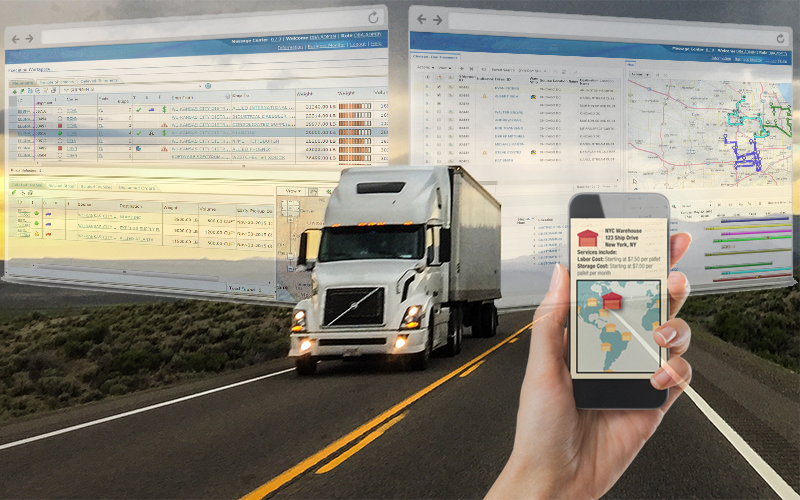
Do you know all the features that your transportation management system has to offer? A transportation management system is a powerful application capable of reducing costs and improving efficiencies. Even so, what it has to offer isn’t always clear.
The transportation management software that runs your fleet’s operations is more powerful than you may think, and there are a few features that many people overlook. You should take some time to explore what they are before dismissing them.
Here are five core features of a TMS that you may be missing:
- On-Demand Routing
Modern transportation management software solutions allow you to set up rules and conditions that will automatically assign vehicles and routes according to your needs. You can create a rule where you want a vehicle to be assigned for a certain amount of time, or when an unexpected event happens, such as an accident or inclement weather, the software will automatically reroute your fleet.
On-demand routing is essential for logistics companies that often face sudden, unforeseen changes. It allows you to be prepared for the unexpected.
- Rules-Based Routing
Most TMSs allow you to set up rules and conditions that will automatically assign vehicles and routes according to your needs. For example, you can create a rule where you want a vehicle to be assigned for a certain amount of time (i.e. it must remain assigned for at least 30 minutes), or when an unexpected event happens such as an accident or inclement weather, the software will automatically reroute your fleet.
Missing this capability will cost you time and money if you have to manually re-assign your fleet. Without this feature, you’ll be wasting hours of time and possibly paying for extra mileage.
- Automated Vehicle Tracking
Once your TMS is tracking your vehicle, it will know when a vehicle starts its shift, where it goes throughout the day, when any stops or deliveries are made along the way, how long breaks are taken, and when the vehicle returns from its assignment.
This enables you to make sure that your vehicles are being used properly and efficiently, but also gives you the opportunity to gain important insights into how drivers operate on a day-to-day basis. For example, if a driver is idling too long or making too many stops along their route, it’s possible to address the issue with that driver or choose a different one for future assignments.
By utilizing this feature, managers can improve productivity and ensure that drivers are strictly following company policies, which can save you time, save money, and improve safety.
- Automated Maintenance Ticketing
If you aren’t utilizing this capability in your TMS, then there’s a chance that you’re wasting time and money on inaccurate tracking of maintenance issues. When integrated into your TMS, automated maintenance ticketing allows you to log maintenance issues manually, upload pictures of your vehicle or any technical equipment, and track the issue as it is resolved.
This means that you no longer need to wait for technicians to report on what they found during their service visits, saving you time and money by avoiding delayed resolutions. The power of automation means that you can rest assured that your TMS is keeping data on what your technicians are doing and how they’re resolving issues.
- Driver Performance Monitoring
Another integral part of a successful logistics operation is ensuring that each and every driver is performing to the best of their ability. The TMS enables you to monitor your drivers’ performance by providing real-time feedback on areas such as idling time, traffic violations, speeding, hard braking, and swerving.
By tracking each driver’s performance, you can monitor a driver’s routes, time of arrival and departure from each assignment, idling times, mileage per trip, and many other metrics. This will allow you to monitor driver performance over time, identify any problematic drivers or locations on your fleet, making it easier to make the necessary improvements.
Is your TMS up to par? If your transportation management software isn’t offering these features, you could be missing out on time savings and cost-saving opportunities for your company. There are many TMSs available in the market today, so it’s important to choose one that offers all of these capabilities so you can be sure your fleet is running as efficiently as possible.






